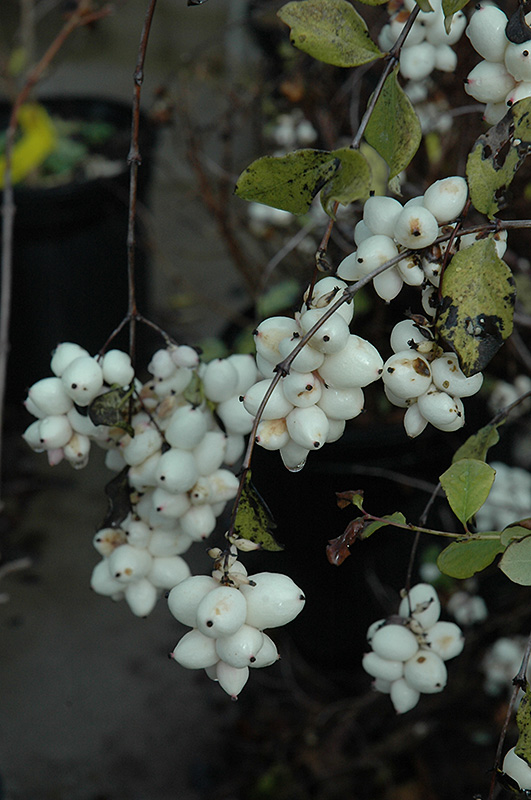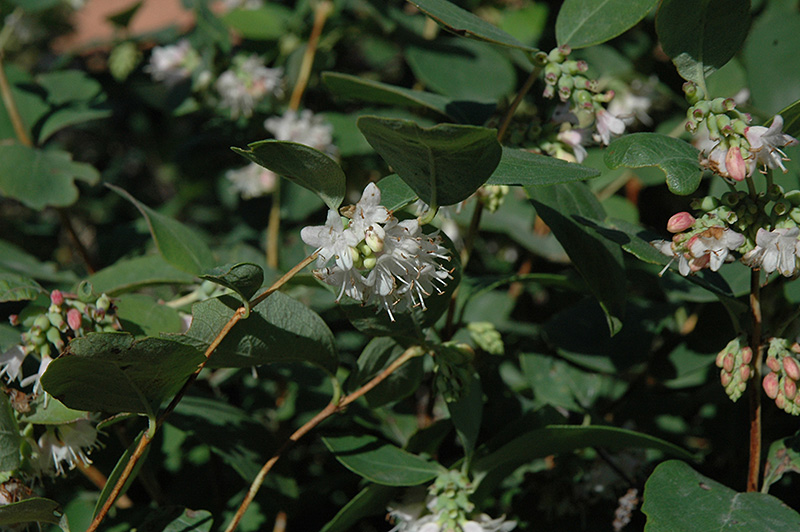Height: 5 feet
Spread: 6 feet
Sunlight:
![]()
![]()
Hardiness Zone: 2a
Description:
A durable and hardy small shrub which produces small pink flowers and showy white berries in fall and into winter; incredibly adaptable to poor conditions, performs well in shade; bushy habit, tends to sucker, good for filling in a tough spot
Ornamental Features
Snowberry is primarily grown for its highly ornamental fruit. It features an abundance of magnificent white berries from early to late fall. It has bluish-green deciduous foliage. The pointy leaves do not develop any appreciable fall color.
Landscape Attributes
Snowberry is a dense multi-stemmed deciduous shrub with a more or less rounded form. Its relatively coarse texture can be used to stand it apart from other landscape plants with finer foliage.
This shrub will require occasional maintenance and upkeep, and can be pruned at anytime. It is a good choice for attracting birds, bees and butterflies to your yard, but is not particularly attractive to deer who tend to leave it alone in favor of tastier treats. Gardeners should be aware of the following characteristic(s) that may warrant special consideration;
- Suckering
Snowberry is recommended for the following landscape applications;
- Mass Planting
- Naturalizing And Woodland Gardens
Planting & Growing
Snowberry will grow to be about 5 feet tall at maturity, with a spread of 6 feet. It tends to fill out right to the ground and therefore doesn't necessarily require facer plants in front, and is suitable for planting under power lines. It grows at a fast rate, and under ideal conditions can be expected to live for approximately 20 years.
This shrub does best in full sun to partial shade. It is very adaptable to both dry and moist locations, and should do just fine under average home landscape conditions. It is not particular as to soil type or pH. It is somewhat tolerant of urban pollution. This species is native to parts of our region.


